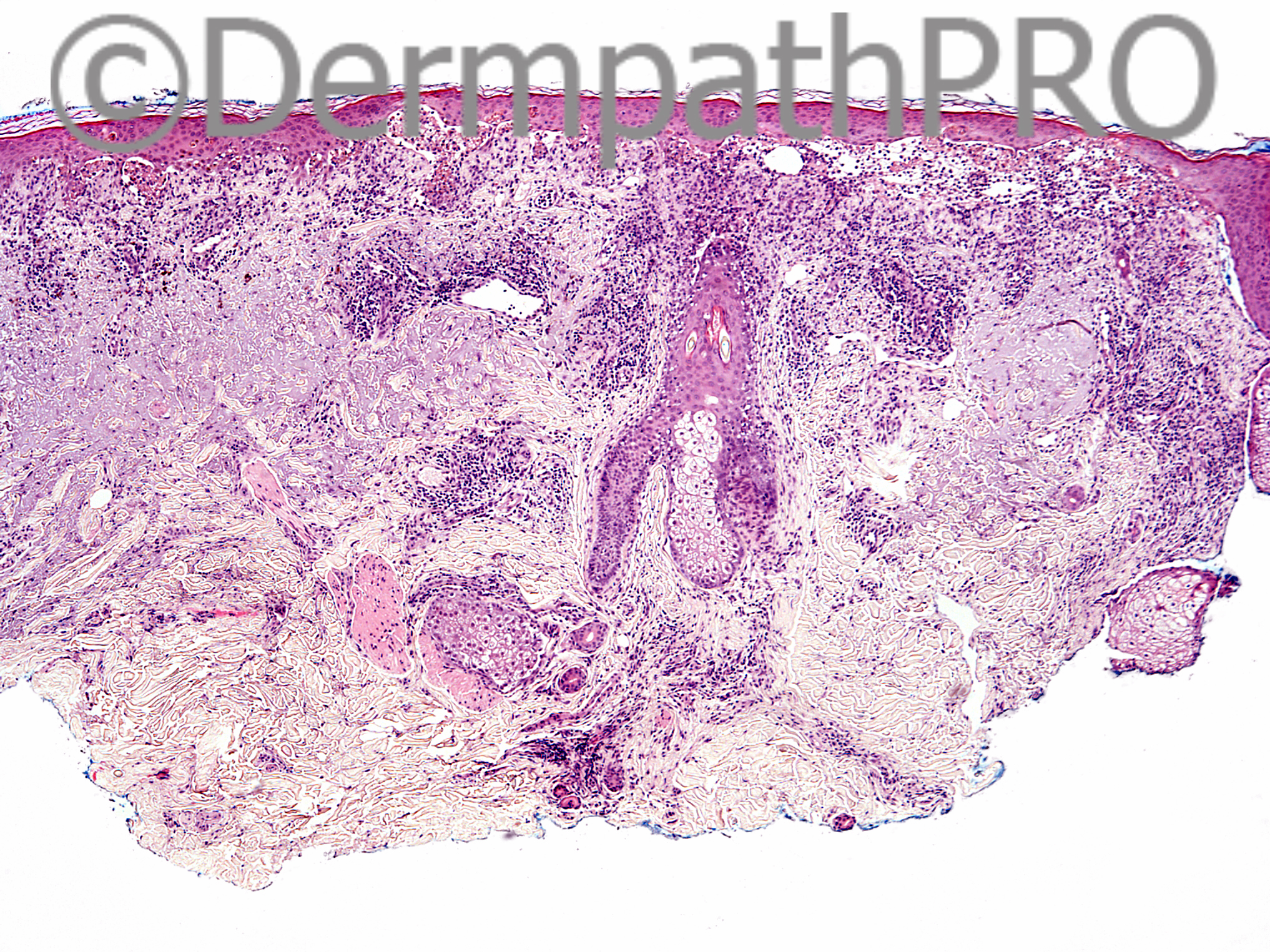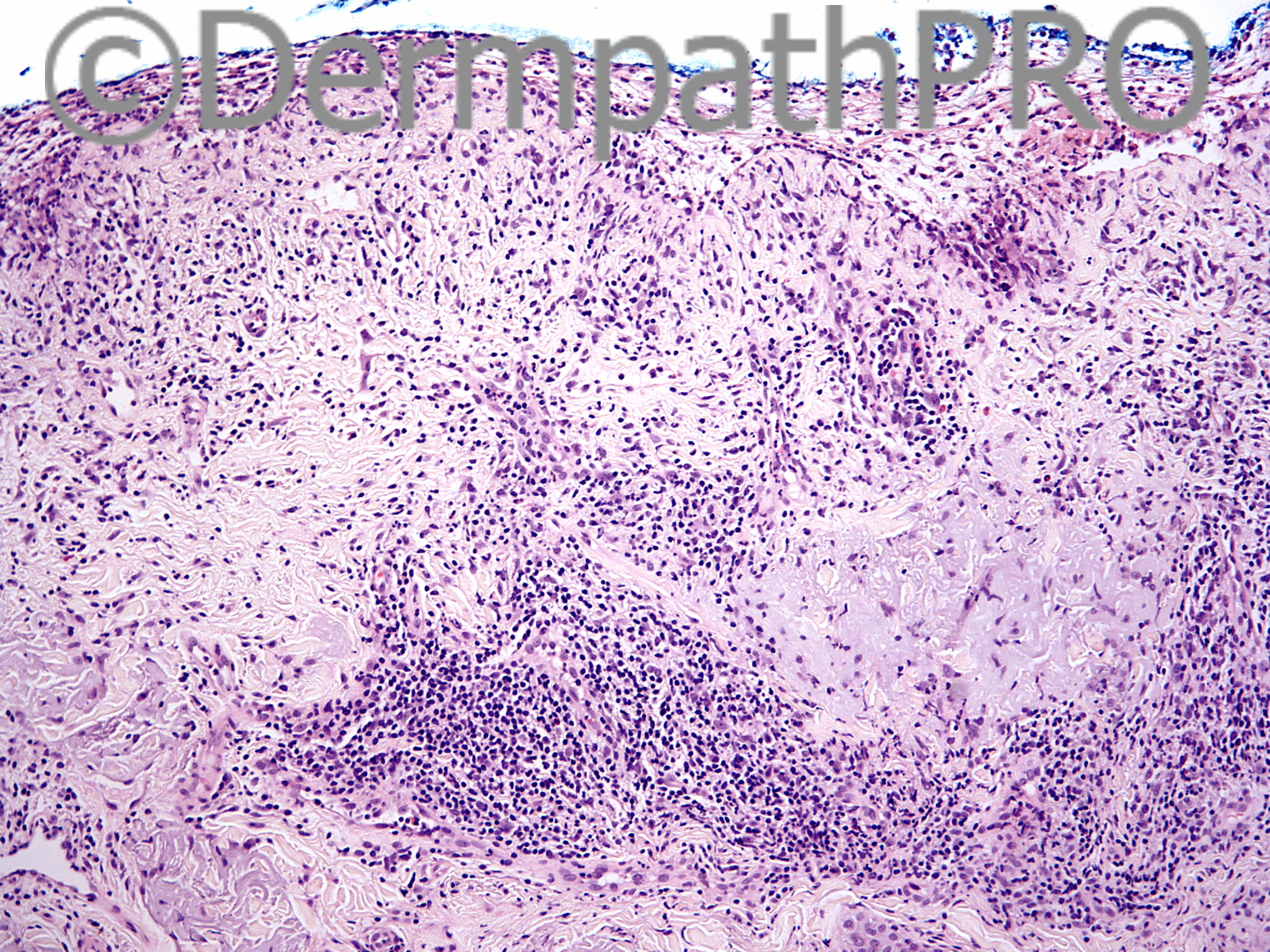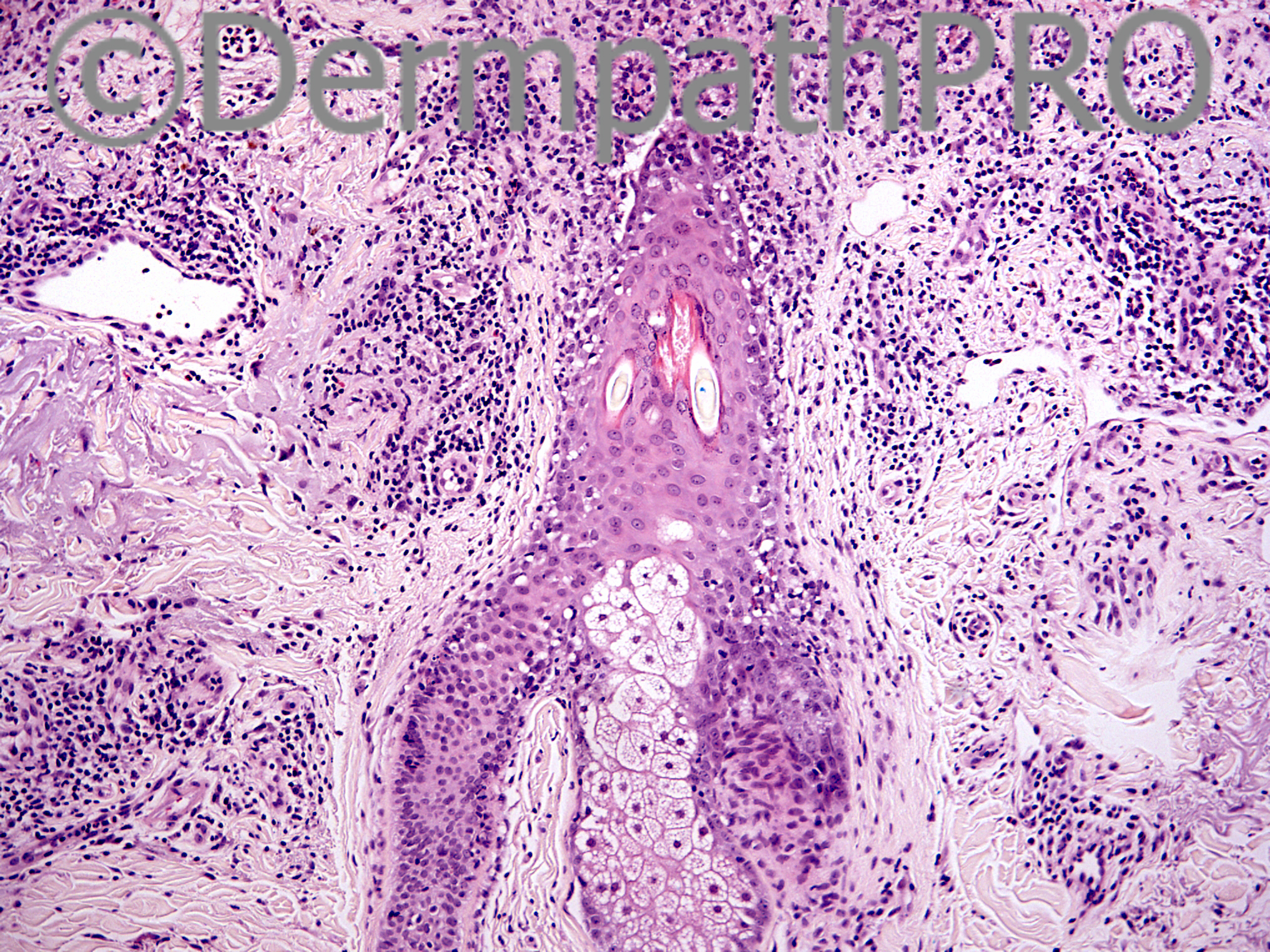Case Number : Case 1359 - 08 September Posted By: Guest
Please read the clinical history and view the images by clicking on them before you proffer your diagnosis.
Submitted Date :
63 year old male with 4 blisters that show up at the same spot 1-2 times a year. Itchy. No changes in medications. Biopsy of left temple.
Case posted by Dr Uma Sundram
Case posted by Dr Uma Sundram








Join the conversation
You can post now and register later. If you have an account, sign in now to post with your account.